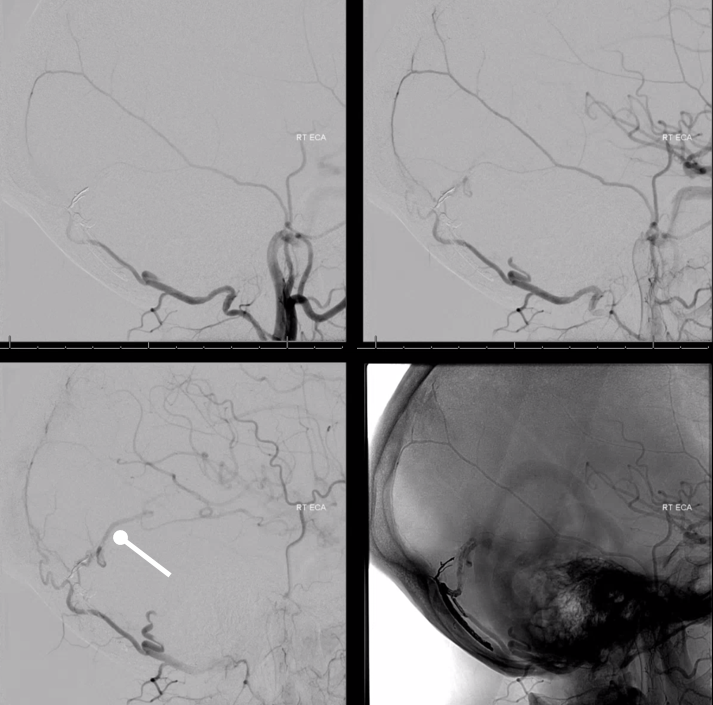Case Courtesy Dr. Eytan Raz

Posterior fossa dural fistula hemorrhage is rare, and pretty much never due to sigmoid dural fistulas. Why? Because cerebellar veins usually dont drain into the sigmoid sinus. The usual case of cerebellar hemorrhage is a tentorium cerebelli dural fistula — a fistula located directly on the tentorium cerebelli rather than in wall of transverse, sigmoid, or straight sinus. These fistulas involve the “tentorial sinus” group of venous channels in the tentorium cerebelli, and drain directly into cerebellar veins. They are rare, but if there is any posterior fossa hemorrhage to be had, chances are it will be from them.
Here is one

Right CCA

ECA. Mostly occipital supply, wih minor contribution from the superior sagittal sinus branch (dashed arrow) supplied by MMA. The fistula drains primarily into the superior vermian vein (ball point arrow)

Left ICA and vert injections, venous phases. Notice that brain continues to use the straight sinus (black arrows)

Right occipital injection. Notice congestion of mesencephalic veins (black arrows) as well.

Micro before nBCA/Onyx

Post occipital embo. Key is to “control” by injecting other sources of supply to prove fistula is closed. In this case, it is not, due to continued supply from MMA

MMA micro (left) and nBCA cast (right)

Post. Notice continues use



Glue cast

Interestingly, there is another fistula present here — a C1 dural fistula. The C1 branch is white dashed arrow, anterior spinal vein is solid white arrows, C2 radicular vein is black arrow, and vertebral venous plexus is dashed black arrow. (see another example here).

Low mag frontal view with other radicular veins below

See other examples of Dural Venous Channel fistulas on Cases page
